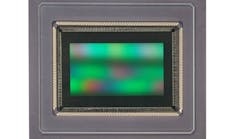This issue marks the fifth anniversary of Vision Systems Design. As always, our editorial content is focused on meeting the systems-integration needs of our readers, who are interfacing components, devices, boards, subsystems, software, and processors into machine-vision and image-processing systems and are constantly searching for novel and improved ways of configuring systems. The magazine's mission is to help readers do their jobs better by offering innovative application articles that target the industrial, medical, scientific, and military/aerospace markets.
To obtain "value-added" vision and imaging information, our staff editors attend trade shows, seminars, and conferences, as well as visit, phone, and e-mail company officials, managers, and designers. They also research the Web, technical publications and reports, and professional societies. But they can't be everywhere, and they can't see and hear everyone and everything. Therefore, Vision Systems Design is seeking articles from companies in the vision and imaging industry. Contact any staff editor for details.
Three-dimensional (3-D) automated-optical-inspection systems have become mandatory for increasing the production yields and cost-efficiencies of integrated-circuit (IC) manufacturers. These systems provide quality control and real-time process monitoring directly after IC soldering is completed. According to contributing editor Winn Hardin, many IC inspection systems use moiré interferometry optical lighting techniques to generate the 3-D characteristics of thin small-outline IC packages (see p. 27).
Although closed-circuit television systems are used by many companies in surveillance applications, these systems are often incompatible because the video signals must bridge the format gap between digital video systems and existing analog sensors. To overcome this problem, says Winn Hardin, a systems integrator developed a digital security information network that delivers central control and remote viewing without having to remove the analog installation (see p. 39).
Three years after 121 countries signed a treaty to ban antipersonnel land mines, many nations are still looking for a cost-effective way to automate the detection, removal, and disposal of these dangerous devices. Writes editor Andrew Wilson, Canadian military researchers have developed a land-mine-detection system that combines the information obtained from several sensing technologies (see p. 33).
Claims that CMOS sensors now surpass the performance characteristics of CCDs have appeared unchallenged on many Web sites. In this month's Product Focus, Andy Wilson explains why these claims are not supported in the marketplace, although CMOS sensors do serve low-cost, high-volume vision applications (see p. 43).
George Kotelly,Editor in Chief[email protected]






